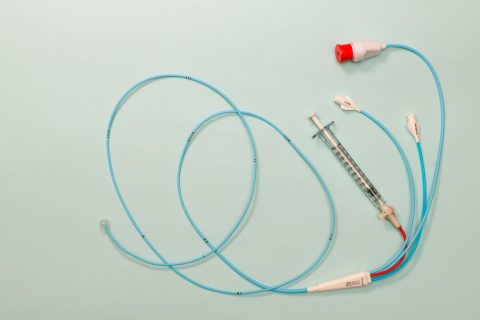Bard PowerPort
The Bard PowerPort implantable catheter device allows delivery of medications intravenously. Possible complications include embolisms, infections and blood clots. Lawsuits allege these devices may migrate or fracture, causing serious and potentially fatal injuries, and demand compensation for damages.
What Is the Bard PowerPort?
The Bard PowerPort is an implantable catheter device used for intravenous delivery of fluids or medicine. Also known as the BardPort, it is used with medications such as chemotherapy. The device is manufactured by Bard Access Systems Inc., a subsidiary of Becton, Dickinson and Company.
Bard PowerPorts have a titanium and plastic housing and use a polyurethane material called ChronoFlex AL. This material is a mixture of polyurethane and barium sulfate. There is a silicone septum for medication access, and catheters for fluid delivery and blood withdrawal. The device is inserted under the skin on the chest or arm. The port connects to a catheter that links to a large central vein, allowing medication to enter the bloodstream.
Lawsuits allege this device has been associated with complications and defects. Injuries include device fractures, migrations, infections, blood clots, embolisms, thrombosis and even death. As a result, several product liability lawsuits have been filed against the manufacturer and its subsidiaries.
Complications & Injuries From the Bard PowerPort
Bard PowerPort complications and injuries range from minor to severe, according to the device’s instructions for use. They include bloodstream infections, embolisms, deep vein thrombosis and other injuries that may be fatal.
Pinch-off syndrome is a serious complication that occurs when the catheter becomes compressed between the clavicle and the rib. This can cause a blockage of medicine or fluids in the catheter and may even fracture the device.
Patients and doctors have reported that the PowerPort may fracture, which can cause serious injuries and vascular damage. Infection originating at the port site is a complication associated with Bard PowerPort devices. Bacteria may enter the body when the device fractures or degrades, leading to life-threatening infections.
Design flaws that make the PowerPort prone to fractures also make it susceptible to migration after implantation, according to lawsuits. This can affect flexible tube parts inserted into blood vessels. In the case of device fracture, patients must undergo emergency surgeries to remove the device.
Was There a Bard PowerPort Recall?
In March 2020, the U.S. Food and Drug Administration announced a Class 2 recall for three Bard PowerPort models. According to the report, Bard recalled the devices because the company “identified that the product may be at risk of incorrectly containing a tunneler with a barb tip meant to attach to a 6Fr catheter instead of the correct barb tip for a 9.6Fr catheter. This can result in a prolongation of operation.”
According to a recall notification to Australian customers in 2019, the incorrect tips could dislodge from the catheter and prolong the procedure. The company said there could be an “incremental risk of minor tissue injury” to patients. But the devices aren’t expected to cause serious injury or long-term health problems.
Currently, patients are filing lawsuit against Bard alleging that they marketed a defective device without making necessary changes or providing adequate warnings. According to lawsuits, the manufacturer should have recalled the device for these problems but hasn’t. These lawsuits are unrelated to the 2019-2020 recall and allege the Bard PowerPort’s design may cause the device to fracture and migrate. This could lead to blood clots, infection and other serious problems, some fatal.
Bard PowerPort Lawsuits
Bard PowerPort lawsuits claim Bard had knowledge of various complications associated with the device and did not alert the public. Bard allegedly continued to market the device as safe without addressing these problems. The company attempted to shift blame onto physicians by suggesting that device fractures occurred because of improper placement. But internal company knowledge that came to light contradicted these claims.
In August 2023, the U.S. Judicial Panel on Multidistrict Litigation ordered the consolidation of Bard PowerPort lawsuits with Judge David G. Campbell in the District of Arizona. MDLs facilitate coordinated discovery and pretrial proceedings. They can result in increased efficiency and consistency in rulings, leading to fairer outcomes for affected individuals. MDLs also help reduce litigation costs by minimizing duplication of efforts.
Despite Bard’s resistance to consolidation, more lawsuits are expected in the future, making multidistrict litigation an important approach for resolving these cases effectively. Those affected should seek legal advice from a product liability lawyer specializing in Bard PowerPort injuries or another qualified product liability attorney.
Calling this number connects you with a Drugwatch.com representative. We will direct you to one of our trusted legal partners for a free case review.
Drugwatch.com's trusted legal partners support the organization's mission to keep people safe from dangerous drugs and medical devices. For more information, visit our partners page.



